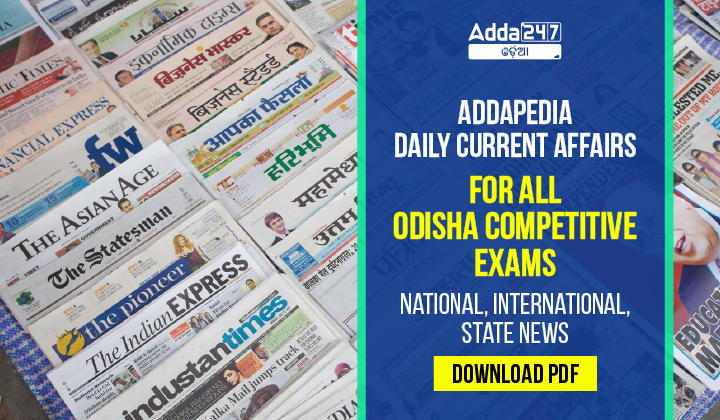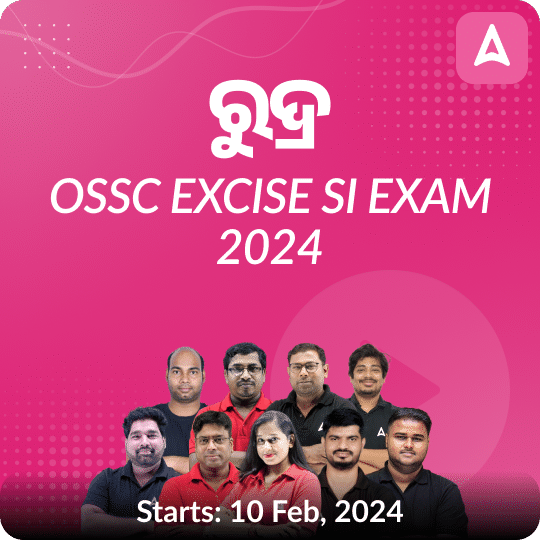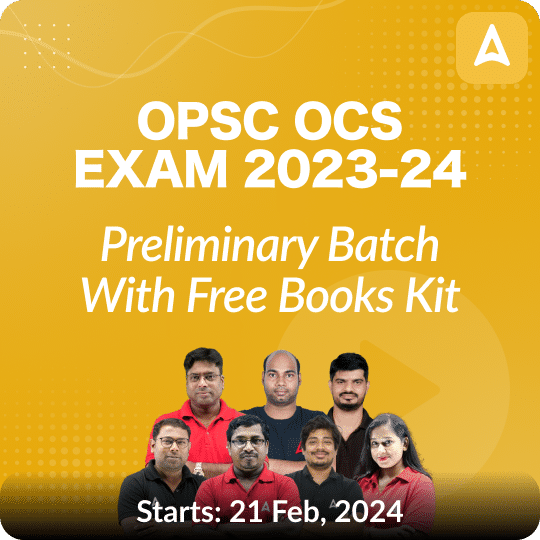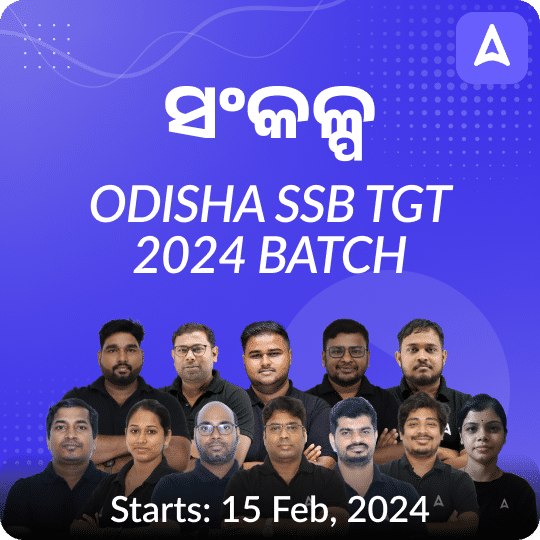As you are aware, in all competitive exams, the “Daily Current Affairs Section” holds significant importance in determining the cutoff scores. Therefore, if you excel in this section, you will have a better chance of achieving higher marks in these exams and securing a spot on the merit list.
Addapedia Odisha – Daily Current Affairs -26 February 2024
|
National and International News
|
| Temple Discoveries in Telangana: Unveiling the Chalukya Kingdom’s Reach |
Context:
- Despite the nearly 500 km distance between Mudimanikyam in Telangana and Badami in Karnataka, recent archaeological findings reveal that Mudimanikyam,a Village in Nalgonda District, was once under the rule of the Badami Chalukyas.
Key points:
- Archaeologists unearthed two temples on the river bank and five within the village.
- Additionally, they found an inscription dating back to the reign of the Badami Chalukyas, who ruled from 543 AD to 750 AD.
- Temples reflect the cosmopolitan nature of the Deccan region, where multiple religions coexisted.
- Alongside the Brahmanical religion, there was room for Buddhism and Jainism, demonstrating the religious diversity of the time.
- Even after the fall of the kingdom, which once governed present-day Karnataka and Andhra Pradesh, the region maintained a vibrant community of devotees worshiping Hindu deities Vishnu and Shiva.
- The farthest known boundaries of the Chalukya Badami kingdom were previously identified as the Jogulamba temples at Alampur and the submerged Yeleswaram sites.
- These new discoveries extend the historical reach of the kingdom.
Chalukyas:
Period
- The Chalukya dynasty was a Hindu dynasty that ruled large parts of southern and central India between the 6th and the 12th centuries.
They ruled as three related yet individual dynasties:
Badami Chalukyas: Ruled from Vatapi (modern Badami) in Karnataka, from the middle of the 6th century.
Eastern Chalukyas: Became an independent kingdom in the eastern Deccan after the death of Pulakeshin II. They ruled from Vengi until about the 11th century.
Western Chalukya Empire: Descendants of the Badami Chalukyas, they emerged in the late 10th century and ruled from Kalyani (modern-day Basavakalyan) until the end of the 12th century.
Architecture:
Vesara Style: The Chalukyas invented the Vesara style while constructing structural temples. This style is a hybrid of Nagara and Dravida styles.
Distinctive Features:
- Chalukya architecture has both cave temple design and structured temple design.
- Chalukya architects used the stellate plan or northern stepped diamond plan for architectural design.
|
| Surrogacy rules
Surrogacy (Regulation) Act 2021
- The Act aims to regulate surrogacy in India, ensure ethical practices, prevent exploitation, and safeguard the rights of intending parents, surrogate mothers, and born children.
- It permits altruistic surrogacy only and outlines specific criteria for surrogate mothers and intending parents.
- The Act also mandates registration for all surrogacy clinics, informed consent from the surrogate mother, and prohibits certain practices.
- It establishes National and State Surrogacy Boards to oversee and regulate surrogacy practices.
- Violations of the Act can lead to imprisonment of up to 10 years and a fine of up to Rs. 10 lakhs.
|
Context:
- The Union government modified the Surrogacy (Regulation) Rules, 2022, on February 21, allowing married couples to use donor eggs or sperm for surrogacy, a relief for those with medical issues.
Key points:
- Surrogacy, a process where a woman (the surrogate mother) carries and delivers a baby for a couple (the intended parents), is a complex and evolving field.
- It involves two main types: traditional surrogacy, where the surrogate mother is also the biological mother of the baby, and gestational surrogacy, where an embryo created through in vitro fertilization (IVF) is implanted in the surrogate mother’s uterus, making her not genetically related to the baby.
- In India, surrogacy has seen significant changes, with the Surrogacy (Regulation) Act, 2021, coming into effect. This Act prohibits commercial surrogacy and allows altruistic surrogacy, where a woman can voluntarily act as a surrogate for intended parents without any monetary compensation except for medical expenses and insurance.
|
| First Lunar Landing by a PRIVATE FIRM |
Context:
- On 24th February, 2024, a significant milestone in the field of Science and Technology was achieved when the Odysseus lander, built by Intuitive Machines, successfully landed on the moon.
Key points:
- This achievement marks the return of the United States to the lunar surface for the first time since the closure of NASA’s Apollo program in 1972.
- The successful landing by Intuitive Machines marks a significant milestone in space exploration, demonstrating the growing capabilities of the private sector in lunar missions.
- With more planned missions in the future, the moon continues to be a focal point for exploration and scientific discovery.
|
| CE-20 engine |
Context:
- The Indian Space Research Organisation (ISRO) achieved a notable accomplishment on February 21 by declaring the successful human-rating of the CE-20 rocket engine.
- This homegrown cryogenic engine, designed to propel the GSLV Mk III (currently known as LVM-3) launch vehicle, signifies a crucial progression in India’s space exploration efforts, especially with regard to the forthcoming Gaganyaan mission.
Key points:
- ISRO has developed three cryogenic engines: KVD-1, CE-7.5, and CE-20.
- The CE-20 engine, using the gas-generator cycle, is easier to build and test compared to the CE-7.5 engine, which uses the staged-combustion cycle.
- Despite the CE-7.5 engine’s higher fuel-use efficiency, the CE-20 engine achieves a higher maximum thrust, making it ideal for the LVM-3 launch vehicle and the Gaganyaan mission.
Read more about Cryogenic Engines. |
| Copyright © by Adda247
All rights are reserved. No part of this document may be reproduced, stored in a retrieval system or transmitted in any form or by any means, electronic, mechanical, photocopying, recording or otherwise, without prior permission of Adda247. |














